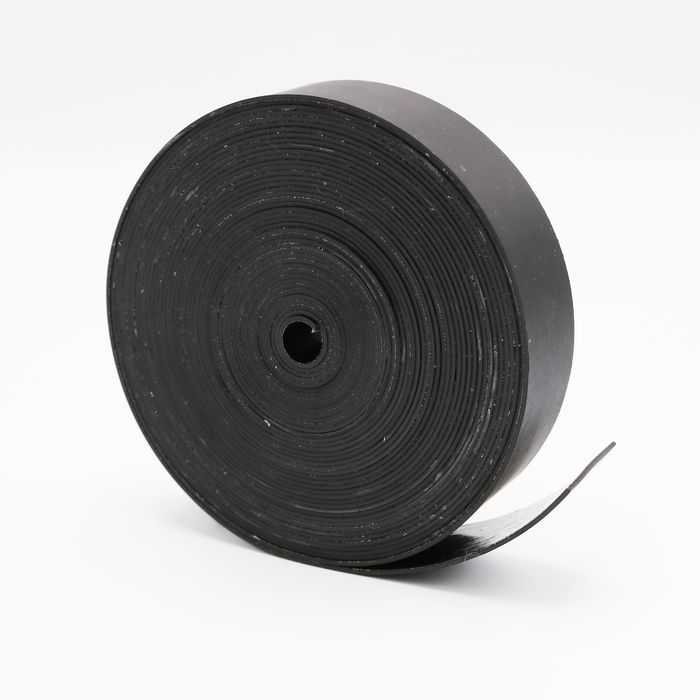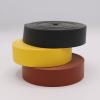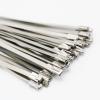
Heat shrink tape, also known as heat shrink, heat shrink tubing or heat shrink sleeving, is a tubular plastic that shrinks when exposed to heat. It serves a wide range of purposes from providing insulation to wires and connections, to water sealing cables, bundling wires or simple cable management. You can probably find heat shrink tape on almost every wire in your home.
Heat shrink tape is used by individuals or businesses and in factory or home settings by professionals and DIY-ers alike. As Dan Maloney said “There really is something fun about applying heat shrink tubing, and there’s no denying how satisfying a termination can be when it’s hermetically sealed.”
Heat shrink tape is also a great step towards ensuring safety for yourself, your business and your wires by providing an added layer of protection against shocks and electrical fires.
Read on to find out more about heat shrink tape, how it's made and the many purposes it serves.
History of heat shrink tape
Heat shrink tape was invented in the 1950s by Paul Cook, owner and CEO of Raychem, a chemical corporation, known for their innovation. Since then, heat shrink has expanded infinitely being bought and produced widely for its various applications and insulating properties.
The science behind heat shrink tape
The science behind heat shrink tape is a fascinating one. As you know, most plastics don’t shrink when heat is applied, they melt. The reason heat shrink tubing is special is because of something called cross-linking. Cross-linking exposes the polymer to radiation that then creates covalent bonds between the polymer’s atoms, thus preventing them from melting. The covalent bonds also give polymers something called plastic memory. Plastic memory means that once the plastic has been stretched into an expanded shape, it will shrink back to its original dimensions when heat is applied.
How is heat shrink tape made?
According to Epetec, heat shrink tape is created using a standard extrusion process in which plastic pellets are heated into a tube with the diameter and thickness of the desired final shrunk dimensions. After extrusion, the chemical cross-linking process occurs to solidify the tubing. Finally, heat and force are used to expand the diameter of the tubing at which point the tubing is cooled so it stays in its expanded state.
What is heat shrink tape made of?
Heat shrink tubing can be made using a range of thermoplastics like polyolefin, polyvinyl chloride (PVC), polytetrafluoroethylene (PTFE) and a variety of others. If you want to learn more about the different types of heat shrink tubing, check out this article that goes into detail about the different types of materials used in heat shrink.
Heat shrink tubing is used in a variety of different scenarios, so some are also designed with different needs in mind. There are a ton of color options now available for your heat shrink to help identify your wiring. Other examples of unique heat shrink tape options feature adhesive lining to help bond the tubing to underlying wires or connections, creating a watertight seal. Some heat shrink tubing also contains a conductive polymer thick film that provides an electrical connection between two or more conductive objects being joined by the tubing, this film creates the connection without the need to solder first. Heat shrink tubing that is required in outdoor settings can also come with UV blocking compounds.
How does it shrink?
Heat shrink tubing comes in different shrink ratios. These ratios determine how small the tubing will become once heated. Most heat shrink tubing has a 2:1 ratio, meaning the relaxed diameter is twice the size of the heated diameter. Some other ratio options for heat shrink are 3:1, 4:1 and 6:1.
What is heat shrink tape used for?
No two heat shrink tubing is the same, nor are the countless applications it can be used for. Beyond its protective components, heat shrink tape is a great resource for often overlooked cable management by organizing, color coding or even bundling your wires.
Some other examples of applications for heat shrink are:
- Sealing water and dust out of cable splices
- Insulating cables and wires against extreme heat in aircraft, boats, and military vehicles
- Providing a barrier between cables and corrosive chemicals
- Make long-lasting labels for network patch cords
- Neatly terminating the ends of braided sleeving
- Improving the look of cables in computer case mods or custom cars and motorcycles
When it comes to wiring, there are a lot of options out there but heat shrink tape stands out above the rest for its multipurpose protection and capabilities.
Electrical tape vs. Heat shrink
Like heat shrink, electrical tape can be a good quick solution to tears in your wiring, or even color coding your cables.
The main difference being that heat shrink provides longer lasting solutions and capabilities. For example, unlike simple electrical tape, heat shrink tape has the additional benefit of providing protection from low impact situations like abrasion and cutting. Heat shrink tape can also be used with any design of conductor from wire to copper. Finally, it creates moisture sealed barriers to protect in any environment including outdoors or industrial settings.
What will you need to heat shrink your wires?
Heat shrink tape can be a necessary but additional step for whatever your wiring needs may be, but thankfully it isn’t an extensive project you’ll need to undertake. All you need for a successful heat shrink is wiring, heat shrink tube and a source of heat, preferably in the form of a heat gun.
To find the best heat gun for your needs, whether you’re a hobbyist, engineer or electrician, check out our Heat Gun Buying Guide.
Want to know more about Heat Shrink?
Hopefully, this blog has helped you understand all you need to know to choose the best type of heat shrink tubing for your application. Set up an account or log in to put in an order.
If you have additional questions, visit our learning center or FAQs. Or you can contact us here with questions or to receive a sample.








